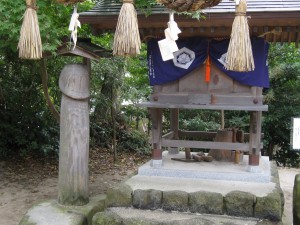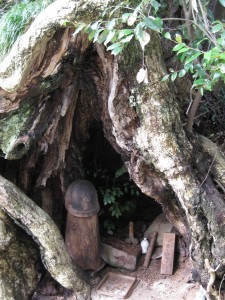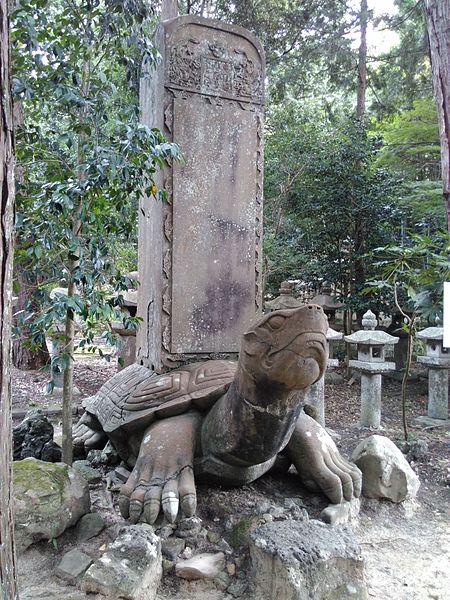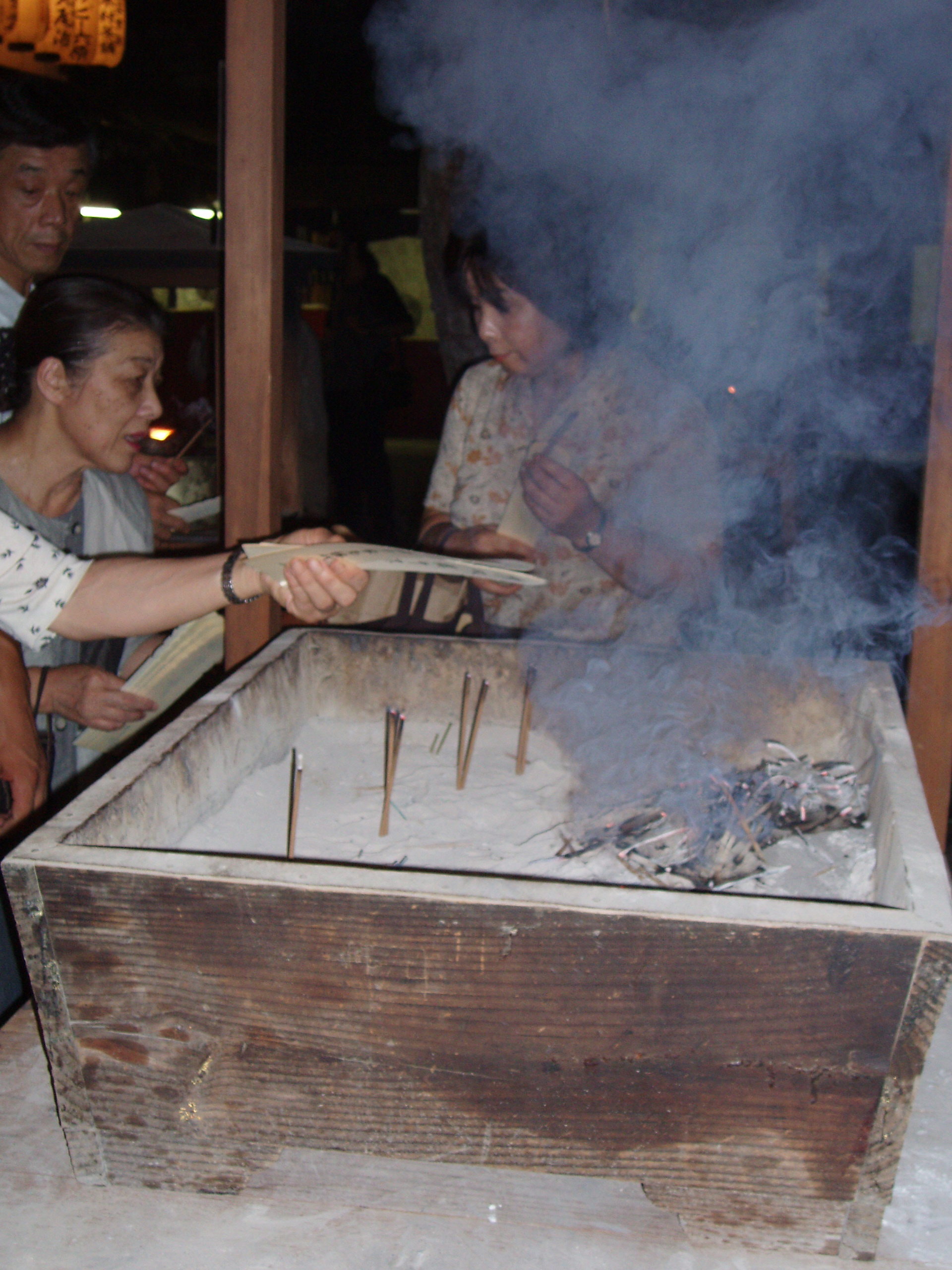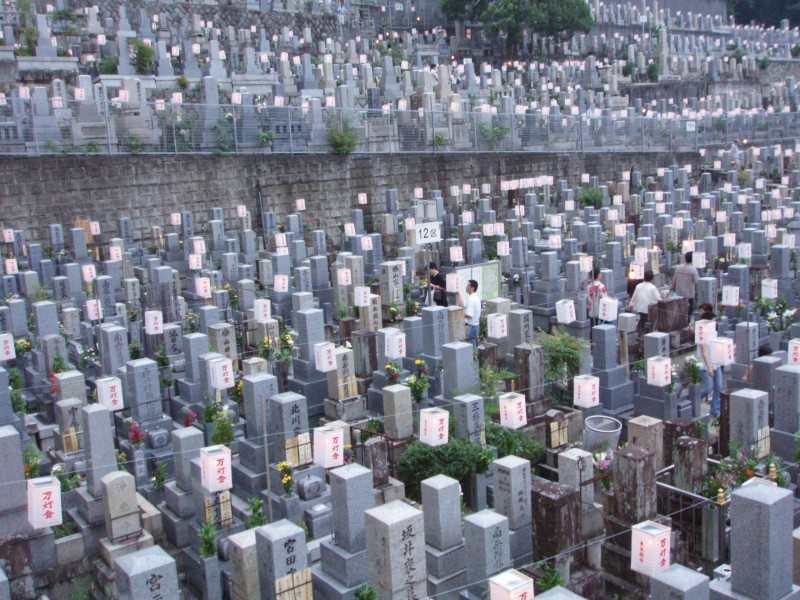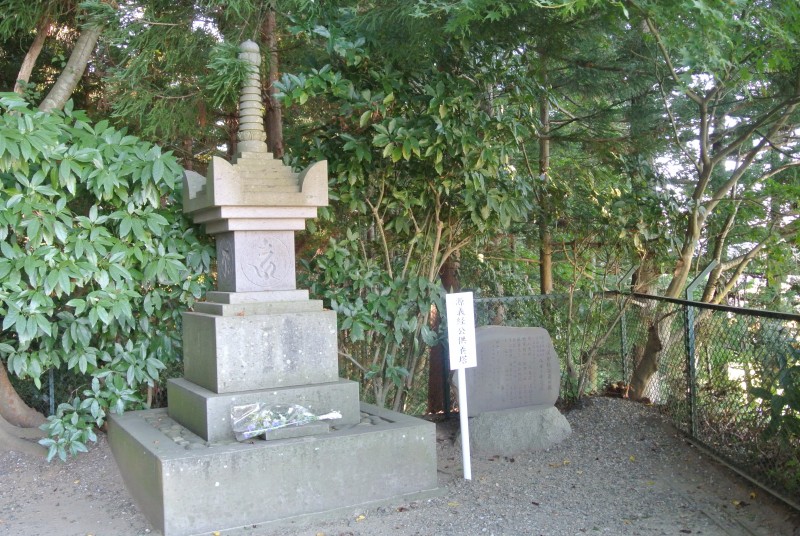Matsue is associated with the writer Lafcadio Hearn (aka Koizumi Yakumo), whose house near the castle can still be visited. It stands close to the Lafcadio Hearn Museum. (To read more of Hearn and his house, see here.)
***************
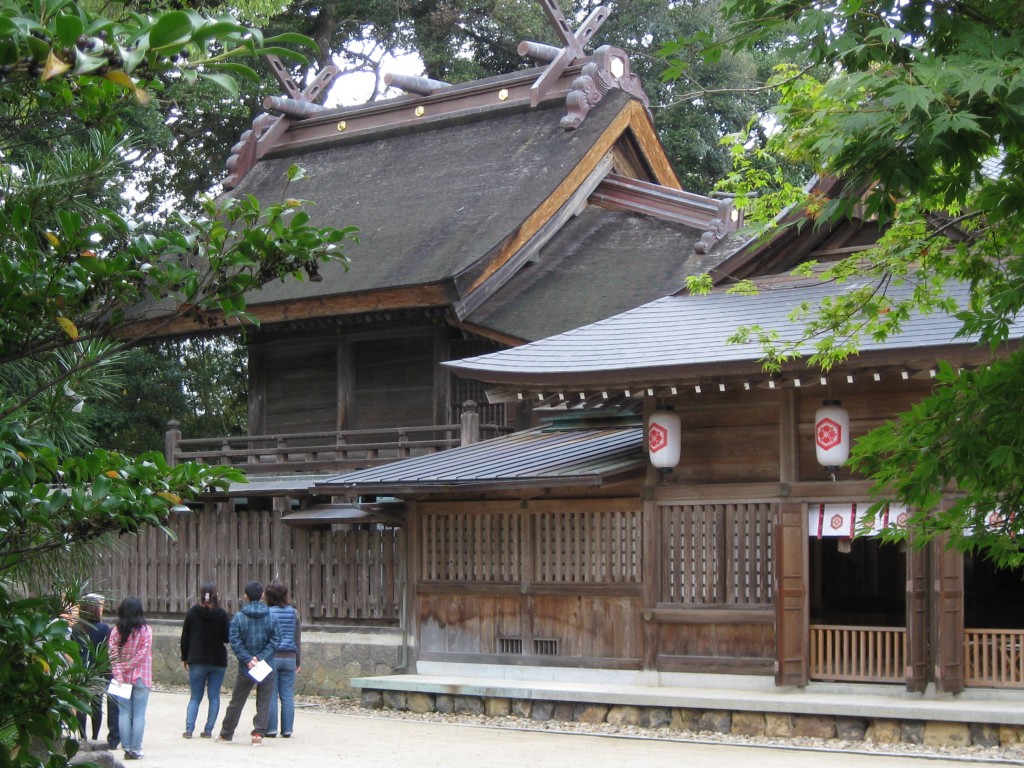
The Ou pilgrimage comprises six rural shrines near Matsue. The most popular of them is Yaegaki Shrine, at the entrance to which a noticeboard proclaims, ‘Hearn was here’. It is popular as an enmusubi shrine (love connection), which owes itself to the shrine being dedicated to Susanoo no mikoto and his bride, Inaba-hime. Also enshrined is their son, which gives the shrine a fertility focus too, and dotted around the precincts are a number of phallic objects.
As noted previously, promotion of the life-force is a vital part of shamanic religions, which is why in Bhutan you can find phalluses painted on the outside of houses for protection (the vigour of the phallus wards off pestilence and evil demons). It is also why stone and wooden phallic symbols are venerated here at Yaegaki. Somehow they survive into the present, despite the widespread removal of fertility objects in modern times, all because sexual organs were seen as shameful by a religion that champions death on a cross.
At one of the subshrines stands a large erect phallus, and in a vaginal opening at the base of a nearby tree are placed a number of smaller wooden phalluses. There are too several ‘enmusubi trees’, whose split trunks symbolise the union of lovers. And in the street outside the shrine is a shop that sells phallus shaped sweets and does a lively trade in souvenirs.
Yaegaki Shrine is part of a Hearn trail in Matsue connecting sixteen sites associated with the one-time resident. Most are not of much interest except for a Hearn fan, but there is one with wider appeal – a prestigious Zen temple called Gessho-ji. Hearn loved it; so did I.
The prime attraction is the atmospheric cemetery, home to imposing tombs, quirky statues and vigorous vegetation. Here lie the feudal lords of Edo times, drawn from the Matsudaira family. So enchanting is the spirit of place that the forty year old Hearn said he wanted to be buried here.
Other items of interest include a monument to thank tea whisks for their service; a rock with the giant hand print of a legendary sumo wrestler; a tea room used by the feudal lords; a gate by a celebrated sculptor with openwork of grapes; a ‘spirit house’ with memorial tablets; and in June every year a riot of hydrangea in bloom.
Pride of place is held by a giant statue of a seventeen foot long turtle (or tortoise), the head of which is over six feet from the ground. This is the Cosmic Turtle that carries the world on its back, an image that occurs across cultures in Hindu, Chinese and Native American mythology. Local lore holds that the turtle sips water at night from the temple pond and has even been seen roaming around town. If you like this kind of thing, then Hearn and Matsue are definitely for you. If not, well, you might be better off in Fukuoka.

